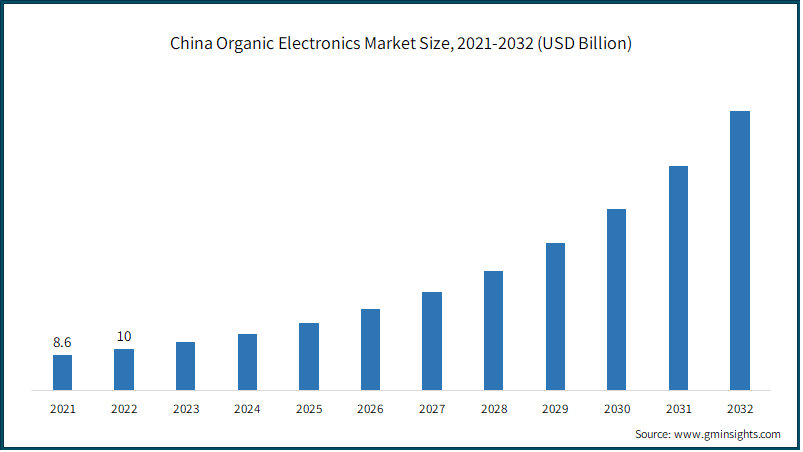Home > Semiconductors & Electronics > Semiconductor > Organic Electronics Market
Organic Electronics Market Analysis
- Report ID: GMI6091
- Published Date: Jun 2023
- Report Format: PDF
Organic Electronics Market Analysis
Based on the end-use industry, the organic electronics market is bifurcated into automotive, healthcare, consumer electronics, energy, aerospace & defense, and others. The healthcare segment is expected to grow at a CAGR of over 23% from 2023 to 2032 as organic electronics enable the development of flexible & lightweight displays that can be utilized in medical imaging devices such as X-ray machines, ultrasound systems, and endoscopes. Flexible displays offer improved ergonomics, portability, and better viewing angles for medical professionals, enhancing the diagnostic precision and patient care. Moreover, organic electronics offer biocompatible materials that can be used in implantable medical devices. These devices comprise biosensors, neural interfaces, and drug delivery systems. The compatibility of organic electronics with biological systems allows for seamless integration and reduced risks of rejection or adverse reactions. The development of implantable devices using organic electronics is expanding the range of medical treatments and driving market development.

Based on application, the market is classified into display, lighting, system components, and others. The display segment was valued at over 40 billion in 2022 and is expected to grow at a rapid rate by 2032. Organic electronics offer flexibility and bendability, making them ideal for creating displays that can be curved, rolled, or flexed and used in TVs, smartphones & wearables. The demand for flexible displays is expanding as they provide enhanced design possibilities & user experiences. Moreover, organic electronic displays, particularly OLED displays, offer vibrant colors, high contrast ratios, and wide viewing angles. These displays provide superior visual quality and immersive viewing experiences, which are of high importance in various applications including televisions, smartphones, and virtual reality devices. The demand for visually appealing displays is fueling the organic electronics market trends.

Asia Pacific organic electronics market is predicted to grow at a CAGR of over 22% from 2023 to 2032 as Asia Pacific is home to a large and rapidly growing consumer electronics industry. China, Japan, South Korea, and India have a considerable presence in the consumer electronics industry, driving the demand for organic electronic components and devices. The region has a high demand for smartphones, televisions, wearable devices, and other consumer electronics. Organic electronics, with their advantages such as flexible displays, lightweight design, and energy efficiency, complement these products, driving their adoption and market share. According to GSMA, the smartphone adoption in China was 81% in 2022, which is expected to grow to over 93% in 2030. The region's strong emphasis on technological advancements and rising disposable incomes contribute to market growth.

